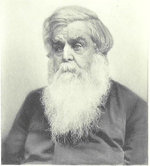Varnum Building

The Varnum Building was a historic mixed-use commercial and residential building in Lowell, Massachusetts. It was a four-story wood-frame structure with an angled front at the corner of Bridge and Third Streets, topped by a square cupola with bellcast pyramidal roof. It was built in 1882 by Leavitt and Daniel Varnum, who operated an insurance business on the premises, and was one of the oldest commercial buildings on Bridge Street. It was added to the National Register of Historic Places in 1988.The building was heavily damaged in an electrically ignited fire on the morning of February 12, 2010, and was declared a total loss. It was demolished on February 18, 2010.
Excerpt from the Wikipedia article Varnum Building (License: CC BY-SA 3.0, Authors, Images).Varnum Building
Bridge Street, Lowell Centralville
Geographical coordinates (GPS) Address Nearby Places Show on map
Geographical coordinates (GPS)
| Latitude | Longitude |
|---|---|
| N 42.650277777778 ° | E -71.303888888889 ° |
Address
Bridge Street 392
01850 Lowell, Centralville
Massachusetts, United States
Open on Google Maps










